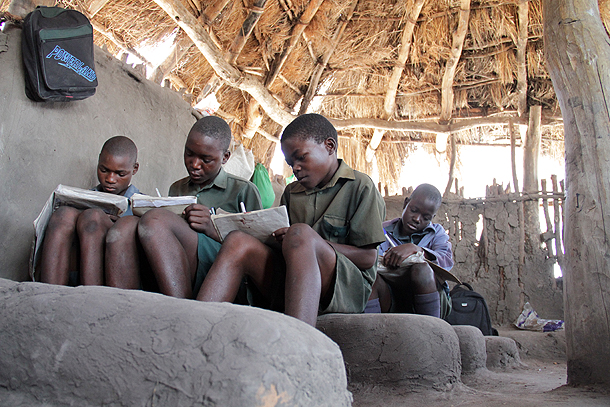
This writer was uber-shocked to learn that the Auditor-General’s audit report on the management of the Basic Education Assistance Module (BEAM) for 2014 revealed, among other things that $2 041 366 of the $45 million pledged by donors remained unused due to administrative bungling by school administrators.
By Nicholas Aribino
Some of the reasons proffered for the under-utilisation of the funding were that some school administrators did not submit requests for assistance claim forms while the Project Management Unit and some schools could not make follow ups to rectify errors on school names and account numbers leading to the rejection of their papers by the paying banks.
The report further intimates that the money that was unused and left with the donors between 2009 and 2010 would have benefited 45 000 rural children over those two years.
The findings of the Auditor- General go a stage further to claim that some children who were not underprivileged benefited from the social protection programme (BEAM).
Given this snapshot of the Auditor- General’s findings, it is the intent of this article to interrogate the management of BEAM as a social protection programme for vulnerable children.
The management of BEAMhas many loopholes that need to be plugged right from its design through implementation. At both policy and practice level, BEAMneeds revisitation with the idea of reaching the beneficiary population without issues of leakage cropping up.
The design of BEAM as a social protection programme is targeted as opposed to being universal.
- Chamisa under fire over US$120K donation
- Mavhunga puts DeMbare into Chibuku quarterfinals
- Pension funds bet on Cabora Bassa oilfields
- Councils defy govt fire tender directive
Keep Reading
BEAM is focused towards assisting underprivileged children in terms of their tuition fees, levies and examination fees.
The bottom line of BEAM may not be realised as revealed by Auditor-General’s report because of errors of inclusion and errors of exclusion.
Errors of inclusion relate to a situation where those who are not supposed to benefit, benefit ahead of deserving cases.
On the other hand, errors of exclusion imply that those who are supposed to benefit are left out in the cold and those who should not benefit find themselves in the net of the beneficiary population.
In technical parlance, these errors are called leakages.
Leakages are, by and large fuelled by corruption, design, targeting methodology and power dynamics.
In the case of BEAM, there is a selection committee which comprises a councillor of the area, some parents and school management. The selection committee in its selection of the beneficiary population may depart from the criteria that are supposed to help them come up with a deserving list of children.
Depending on the power dynamics within the selection committee anything can happen. According to this writer the composition of the committee is flawed. It is flawed because it lacks the voice of the child. Schools exist for children.
Children should essentially be active participants in the governance and management of schools, depending on their ages and evolving capacities. The human rights based approach to programming recommends that adults should not plan for children; rather they should plan and execute their plans with children.
Children should be part and parcel of the BEAM selection committees in order to cut down on issues of leakage.
According to Article 12 (1) of the United Nation Convention on the Rights of the Child,
l States Parties shall assure to the child who is capable of forming his or her own views
l The right to express those views freely in all matters affecting the child, the views
l Of the child being given due weight in accordance with the age and maturity of the child.
The Zimbabwean government is a signatory state to the UNCRC and should take heed of the above Article and influence the participation of children in Beam selection committees.
By so doing the government will be respecting, promoting, protecting and fulfilling the vulnerable children’s right to education.
Children’s participation in the BEAM selection committees would bring sanity to the whole exercise because children know the socio-economic backgrounds of their peers and would be better positioned than adults to recommend children who should benefit from the policy programme.
Children feel for others and are not corrupt.
The BEAM selection committee which is mum on the voice of the child is not good enough in terms of levelling out the playing field because adults are largely guided by many persuasions in their choices of the beneficiary population. These persuasions may be political, cultural, social, religious and geographical, among others. The said persuasions may work to the disfavour of some deserving children.
Essentially, adults erroneously think that they are the best interpreters of children, without appreciating that children know better and can do better in the areas that concern them as individuals and groups.
Arguably, children need to be involved in the identification of problems that relate to them, in the designing, implementation, monitoring and evaluation of such programmes.
The best interests of the child should guide the management of BEAM. If children were involved in the process this writer thinks that no BEAM funds would have gone unused in 2014.
However, children may need to be trained about their roles in the Beam selection committees before they can start participating in such structures. The starting point could be the popularisation of the policy programme by highlighting its objectives.
The Ministry of Labour and Social Services which administers the BEAM policy programme may conduct the popularisation workshops.
BEAM as a social protection programme tries to address Article 28 (1) of the UNCRC which states that States Parties should recognise the right of the child to education with a view to achieving this right progressively and on the basis of equal opportunity.
Vulnerable children may not realise the right to education because of coming from backgrounds that experience multidimensional deprivations; BEAM therefore comes handy to equalise opportunities through supporting these children with their tuition fees, levies and examination fees.
The central objective of BEAM gets defeated when 45 000 children can’t benefit because of bureaucratic webs and corruption.
The system ought to be cleansed of such wheelbarrow workers, who can only go as far as they are pushed.
The system needs to be monitored with increased regularity so that it is sanitised and cleared of malcontents that sit on the needs, rights and future of vulnerable children.











